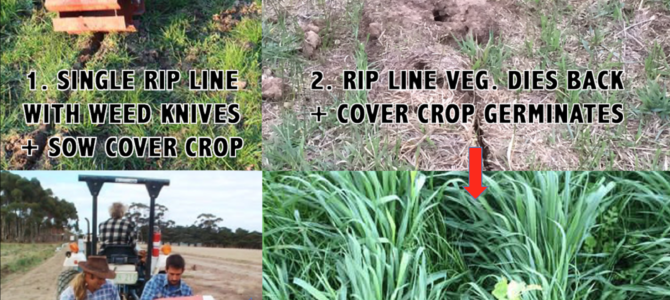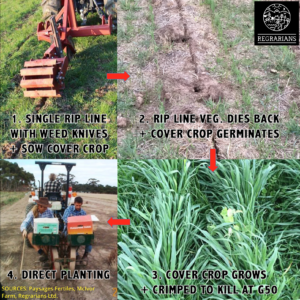Over the years I’ve been musing and discussing with both myself and a number of folks about the notion of non-inversion, low-till broad scale tree/shrub establishment. Its always concerned me that methods we pioneered, going back to the mid 90’s with the DOJO (ripper:tiller:mounder) and beyond, have been particularly deleterious to soil life, especially mycorrhizal fungi.
Following our work with McIvor Farm Foods Jason Hagan on the successful development of the #KeylineSuperPlow Mk3, I am now satisfied that a prototype system should be established. The montage above demonstrates the basics.
#5Forestry #10Energy



Hi Darren.
A bit of a coincidence your writing about this topic as I’ve been looking into this for hazelnuts.
Recommended industry practice for hazelnut orchard preparation is an 80cm deep tillage and then mounding of the soil to help with drainage, and reduce risk of flooding/logging. This process will surely be highly damaging to mycorrhizal.
So we are looking at this question of can we use a rip till approach on orchards scale hazelnut plantings. An ecological approach to establishment phase.
Is G50 what you technically term the “Bruce Phase”, before we see any flowering?
Best,
Will
The Zedoks Scale growth stage at G50 is typically the stage an annual plant has reached its peak leaf:stem ratio — this corresponds with when a plant’s root system is also at its largest size and when reproduction is about kick on…